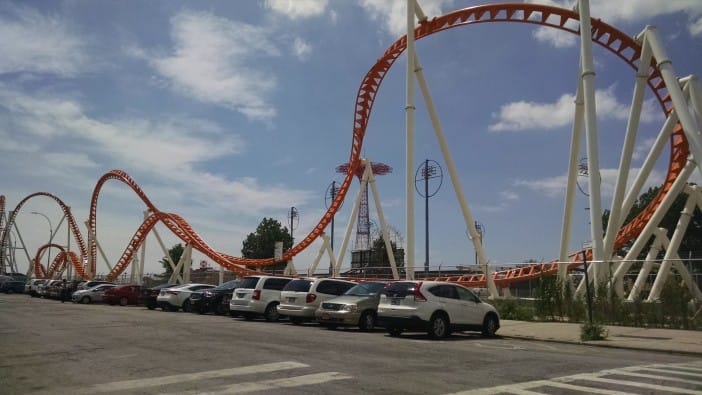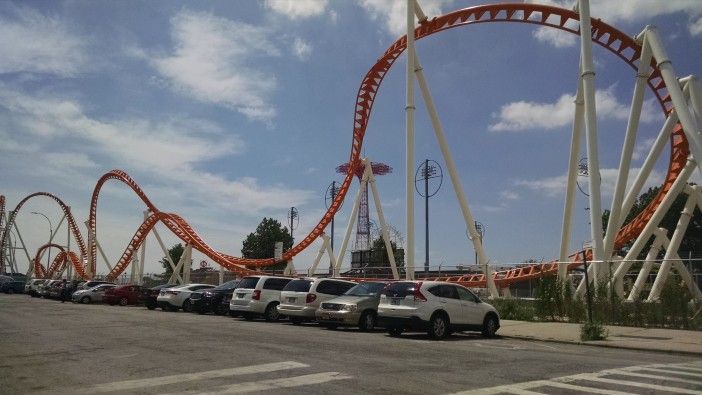City Moves To Seize Vacant Coney Island Lots Using Eminent Domain


The city is weighing plans to grab three abandoned Coney Island lots from developers by invoking the power of eminent domain, which allows the government to seize private property for the public’s use.
The largest space being eyed by New York’s Parks Department is a 60,000-square-foot tract near West 15th Street, the site of the original Thunderbolt roller coaster — featured in Woody Allen’s Annie Hall — which stopped functioning in 1982 and was razed in 2000 on orders by former Mayor Rudy Giuliani, reports the New York Post. (A sleek new version of the thrill ride was built last year on an adjacent sliver of land owned by the city.)
All three spaces, which span a total of 75,000 square feet, were included in former Mayor Michael Bloomberg’s 2009 rezoning plan to create one, long stretch of amusement attractions and green spaces along Coney Island’s waterfront, connecting the Parachute Pump, the Wonder Wheel and the Cyclone. The other lots in question are located off the Riegelmann Boardwalk near West 12th Street and West 23rd Street.
Bloomberg’s Coney Island project was initially stalled during a heated standoff with local developer Joe Sitt, who is behind Coney Island Art Walls and Smorgasburg. The city wound up paying Sitt a whopping $95.6 million for seven acres of land for the construction of Luna Park and other attractions.
The languishing lots are owned by the heirs of Kansas Fried Chicken mogul Horace Bullard — who, ironically, was a strong advocate for the revitalization Coney Island until he died in 2013 — the same family that has refused to sell or maintain Coney Island’s historic but deteriorating Shore Theater. City officials told the Post that they are forced to utilize eminent domain because all efforts to settle on “fair-market” price tag with the owners have failed.
Councilman Mark Treyger, whose district includes most of Coney Island, weighed in on the fate of the empty lots on Facebook yesterday.
“It is always preferable for normal and regular real estate business to take place. At the same time, it is extremely frustrating for residents and myself to walk by and see vacant lots holding back our ability to actualize a common vision for the future of our iconic neighborhood,” wrote Treyger. “The community and I will not be held hostage by developers simply speculating on how much wealth they can accumulate when the needs of the people of my district should come first.”
Treyger added that while he supported the city’s move to seize the land, a comprehensive plan for Coney Island must include infrastructure improvements, expanded transportation options, and year-round attractions that benefit Coney Island’s existing population and business community.
The city’s Parks Department also defended its move to seize the land in a statement.
“NYC Parks’ activation of these vacant lots has been planned and supported by the community for many years,” Parks’ spokesperson Crystal Howard told Gothamist. “It’s a significant step toward increased parkland for the neighborhood, and providing improvements like new sewers and roads, and the development of much-needed mixed-income housing that the neighborhood badly needs.”
Neighbors are invited to attend public hearing on Coney’s waterfront lots on October 19 at 1:30pm, at Coney Island Hospital, located at 2601 Ocean Parkway.



